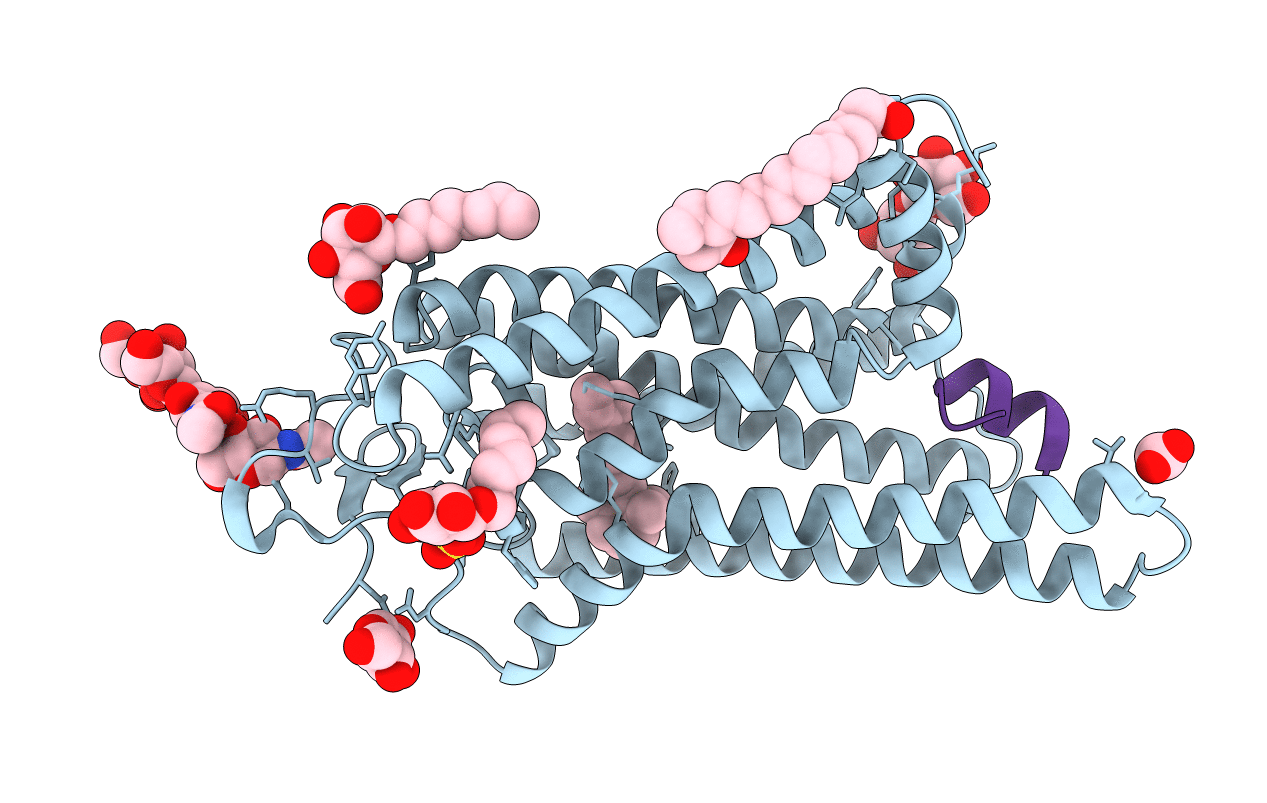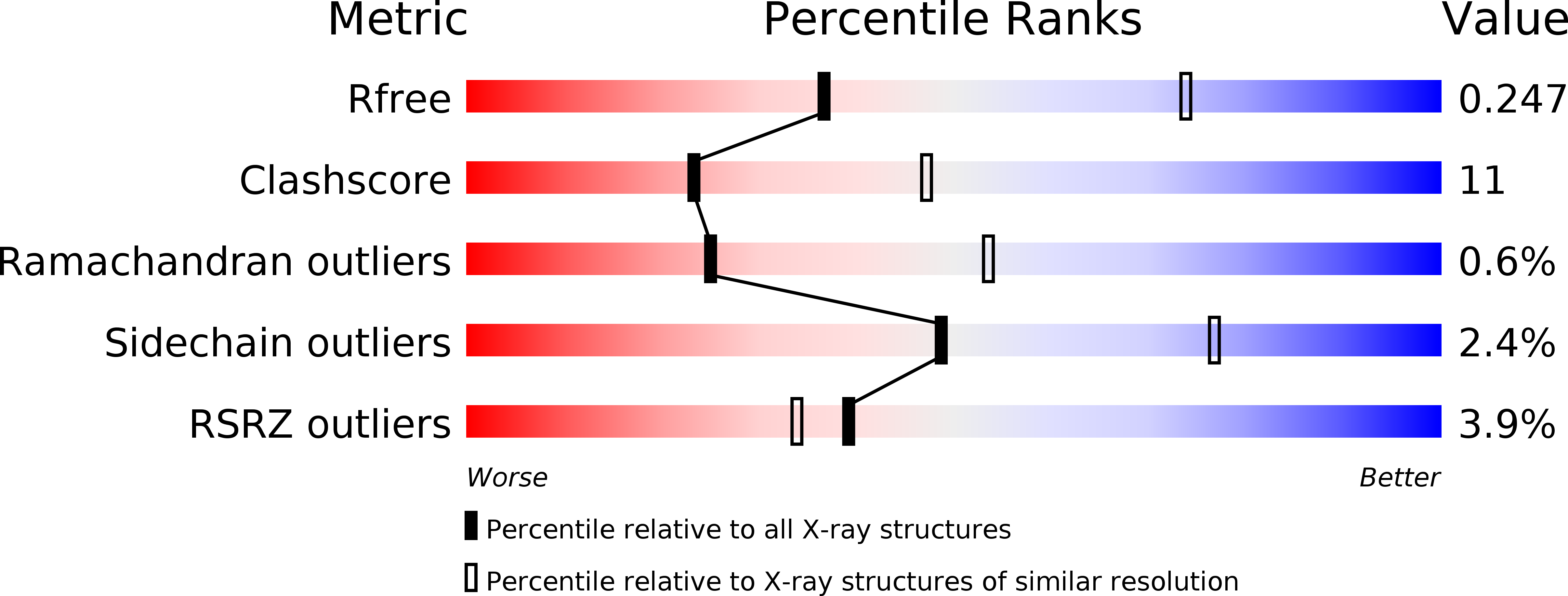
Deposition Date
2010-11-26
Release Date
2011-03-09
Last Version Date
2024-10-30
Entry Detail
PDB ID:
3PQR
Keywords:
Title:
Crystal structure of Metarhodopsin II in complex with a C-terminal peptide derived from the Galpha subunit of transducin
Biological Source:
Source Organism:
Bos taurus (Taxon ID: 9913)
Method Details:
Experimental Method:
Resolution:
2.85 Å
R-Value Free:
0.24
R-Value Work:
0.21
Space Group:
H 3 2


